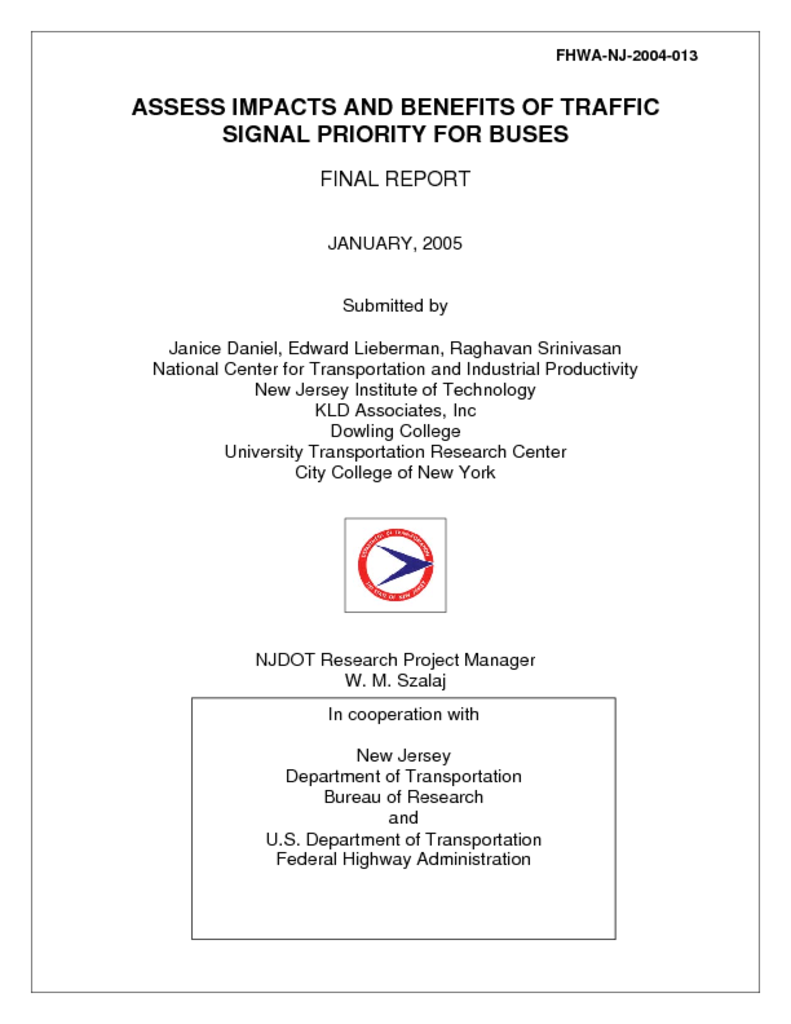Bus transportation has traditionally served as the backbone of public transportation. Despite the importance and
efficiency of buses, compared to the automobile, these vehicles are weighted equally with automobiles at traffic
signals where a bus carrying 50 passengers is treated the same as an auto with a single person. Delays caused
by traffic signals and by street traffic congestion increase bus operating costs and degrade transit service quality.
One approach to minimizing delays to bus transportation is by implementing bus signal priority. Bus signal priority
is an attempt to minimize or eliminate delays to buses at a signalized intersection by temporarily altering the traffic
signal phase so that an approaching bus receives a green phase when it arrives. The potential savings in bus
travel times can allow buses to maintain its schedule and provide better reliability in travel times.
Although signal priority has proven to be an effective tool for reducing delays to buses, this technique is not
always beneficial to the overall traffic network. Providing priority for transit vehicles along a corridor with a large
number of transit vehicles can cause a coordinated network to be out of step resulting in an overall increase in
delay. Bus signal priority also has the disadvantage of penalizing the cross-street traffic when high transit
volumes exist at the corridor. The objectives of the research described in this report is to assess the impacts of and
the implementation issues associated with the use of bus signal priority in New Jersey and to assess the benefit
and costs of signal priority.
Publication Category




